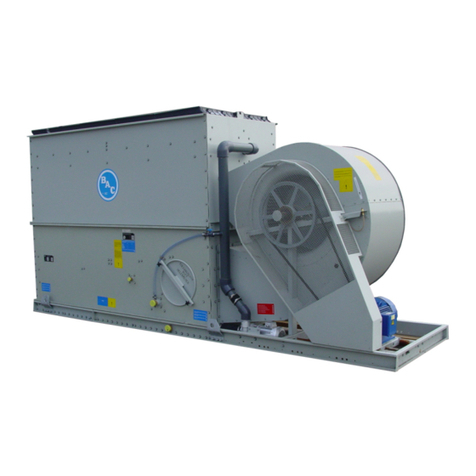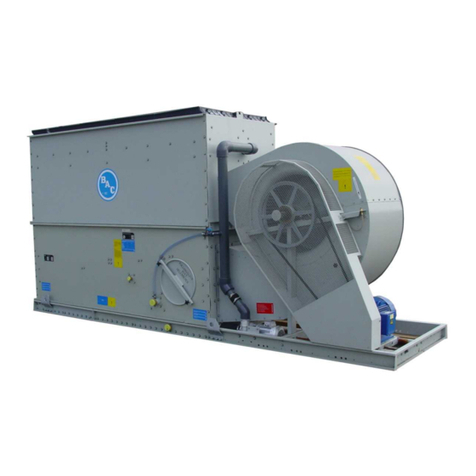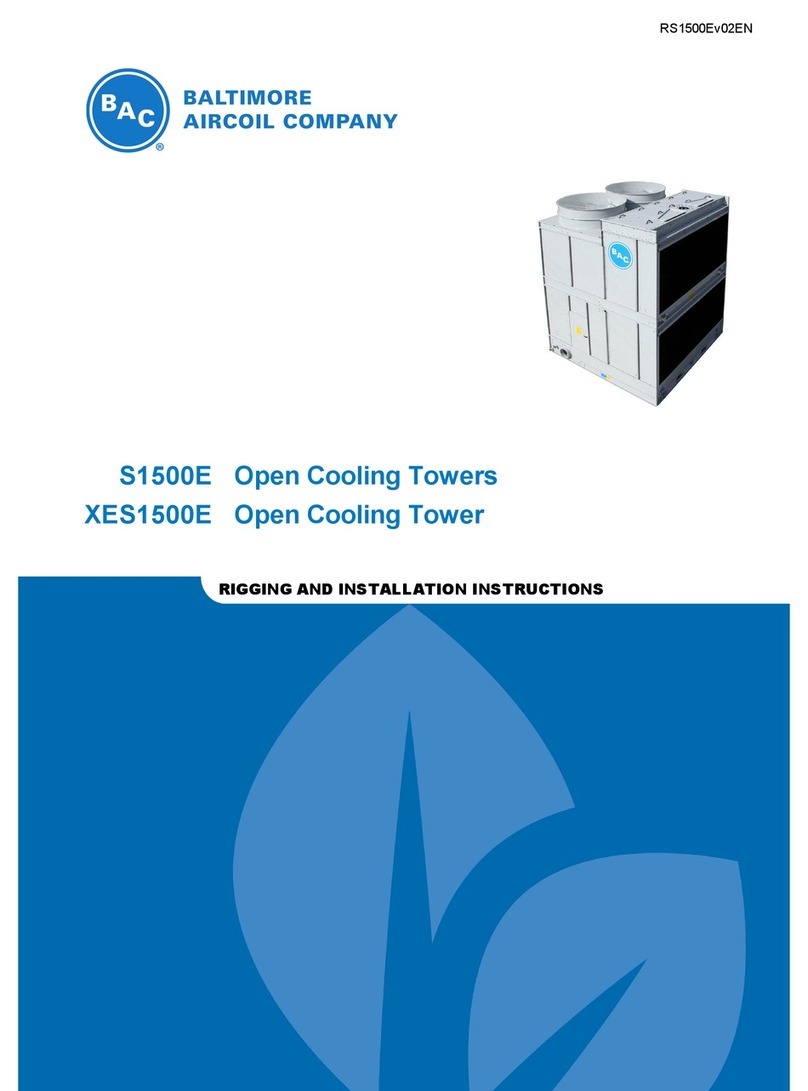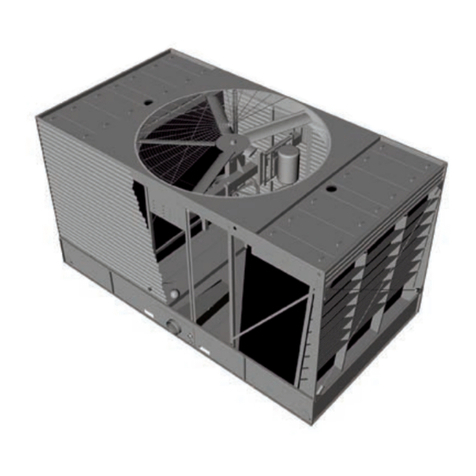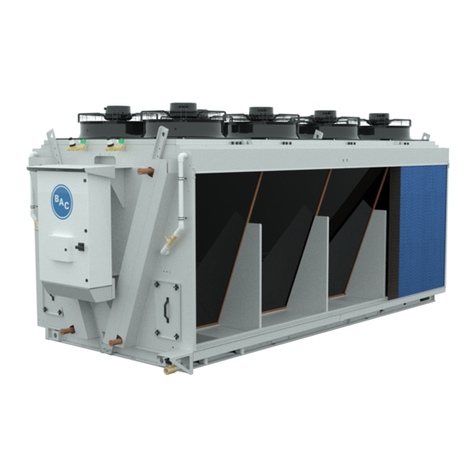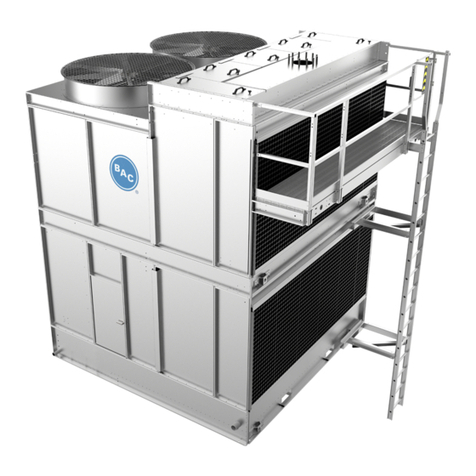
Safety Precautions
All electrical, mechanical and rotating machinery constitutes a potential hazard, particularly for those not familiar
with its design, construction and operation. Accordingly, adequate safeguards (including use of protective
enclosures where necessary) should be taken with this equipment both to safeguard the public (including minors)
from injury and to prevent damage to the equipment, its associated system and the premises.
If there is doubt about safe and proper rigging, installation, operation or maintenance procedures, contact the
equipment manufacturer or his representative for advice.
When working on operating equipment, be aware that some parts may have an elevated temperature. Any
operations on elevated level have to be executed with extra care to prevent accidents.
Caution
DO NOT COVER UNITS WITH PVC ELIMINATORS OR FILL WITH A PLASTIC TARPAULIN.
TEMPERATURE INCREASE DUE TO SUN RADIATION COULD DEFORM THE FILL OR
ELIMINATORS.
AUTHORIZED PERSONNEL
The operation, maintenance and repair of this equipment should be undertaken only by personnel authorized and
qualified to do so. All such personnel should be thoroughly familiar with the equipment, the associated systems
and controls and the procedures set forth in this and other relevant manuals. Proper care, personal protective
equipment, procedures and tools must be used in handling, lifting, installing, operating, maintaining and repairing
this equipment to prevent personal injury and/or property damage. Personnel must use personal protective
equipment where necessary (gloves, ear plugs, etc...)
MECHANICAL SAFETY
Mechanical safety of the equipment is in accordance with the requirements of the EU machinery directive.
Depending upon site conditions it also may be necessary to install items such as bottom screens, ladders, safety
cages, stairways, access platforms, handrails and toe boards for the safety and convenience of the authorized
service and maintenance personnel.
At no time this equipment should be operated without all fan screens, access panels and access doors in place.
When the equipment is operated with a variable fan speed control device, steps must be taken to avoid operating
at or near to the fan's «critical speed».
For more information consult your local BAC Balticare representative.
ELECTRICAL SAFETY
Each fan and pump motor associated with this equipment should be installed with a lockable disconnect switch
located within sight of the equipment. No service work should be performed on or near the fans, motor, drives or
inside the equipment unless fan and pump motors, heaters etc. are electrically isolated.
LOCATION
All cooling equipment should be located as far away as possible from occupied areas, open windows or air intakes
to buildings.
LOCAL REGULATIONS
Installation and operation of cooling equipment may be subject to local regulations, such as establishment of risk
analysis. Ensure regulatory requirements are consistently met.
W W W . B A L T I M O R E A I R C O I L . C O . Z A
8












